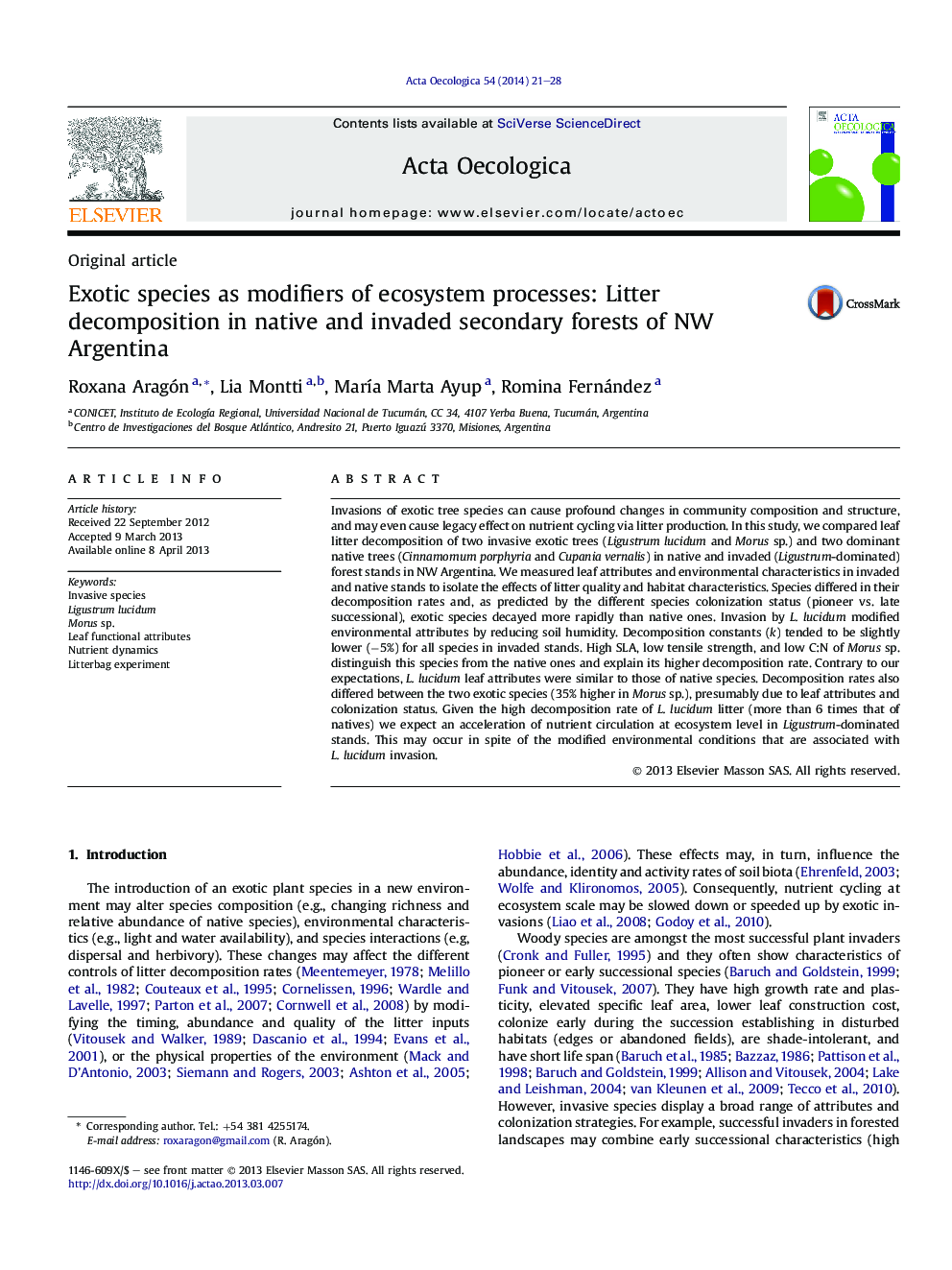| Article ID | Journal | Published Year | Pages | File Type |
|---|---|---|---|---|
| 4380837 | Acta Oecologica | 2014 | 8 Pages |
Abstract
Invasions of exotic tree species can cause profound changes in community composition and structure, and may even cause legacy effect on nutrient cycling via litter production. In this study, we compared leaf litter decomposition of two invasive exotic trees (Ligustrum lucidum and Morus sp.) and two dominant native trees (Cinnamomum porphyria and Cupania vernalis) in native and invaded (Ligustrum-dominated) forest stands in NW Argentina. We measured leaf attributes and environmental characteristics in invaded and native stands to isolate the effects of litter quality and habitat characteristics. Species differed in their decomposition rates and, as predicted by the different species colonization status (pioneer vs. late successional), exotic species decayed more rapidly than native ones. Invasion by L. lucidum modified environmental attributes by reducing soil humidity. Decomposition constants (k) tended to be slightly lower (â5%) for all species in invaded stands. High SLA, low tensile strength, and low C:N of Morus sp. distinguish this species from the native ones and explain its higher decomposition rate. Contrary to our expectations, L. lucidum leaf attributes were similar to those of native species. Decomposition rates also differed between the two exotic species (35% higher in Morus sp.), presumably due to leaf attributes and colonization status. Given the high decomposition rate of L. lucidum litter (more than 6 times that of natives) we expect an acceleration of nutrient circulation at ecosystem level in Ligustrum-dominated stands. This may occur in spite of the modified environmental conditions that are associated with L. lucidum invasion.
Related Topics
Life Sciences
Agricultural and Biological Sciences
Ecology, Evolution, Behavior and Systematics
Authors
Roxana Aragón, Lia Montti, MarÃa Marta Ayup, Romina Fernández,
